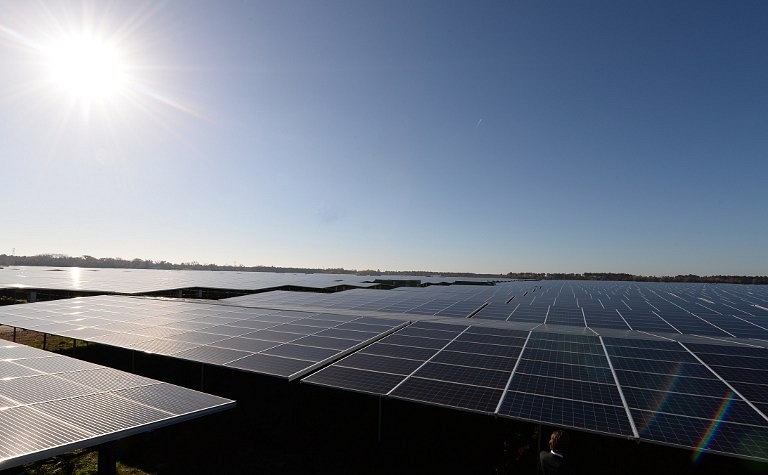World
Good News: 25 Years From Today, Renewables Will Rule The World

Solar
In its report predicting the future of energy, Bloomberg paints an optimistic picture. For instance, the installed capacity of solar power will rise from four percent today to 29 percent in 2040, according to the report. The share of wind energy will almost double to what it is at present. Hydro power will also see its share jump from current 12 percent to 18 percent.
The predicted drop in the coal consumption should bring cheer to all champions of green energy. Its share will come down from current 31 percent to 16 percent in the next 25 years, which is very significant.
What is strange is that the share of nuclear energy is also going to come down by one percent. But nuclear energy is very much a clean energy source. Why, then, are countries not going for it? High initial infrastructure costs and restrictions on technology use and sale are perhaps big impediments for them, especially for poor and developing nations.
Where does India stand?
The Modi government has big plans to ramp up India’s renewable energy share in total installed capacity. Last year, in June, the Union government increased its solar capacity target by five times, from 20 GW to 100 GW by 2021-2022. It also has ambitious plans for deployment of 60 GW of wind energy.
If these targets are met and the future governments also follow suit and keep increasing the installed solar capacity at the same rate, then by 2040 we could end up with 400 GW of solar energy. This would be 10 percent of the total installed capacity in solar space, which Bloomberg predicts the world will have in 2040. India has the opportunity to be a world leader, given it delivers on its promises.
Here is a brief summary from the Bloomberg report:
- China’s economic slow-down, coupled with developed country emissions, regulations, carbon prices, cheap gas and India’s plan to develop its domestic resources leads us to conclude that coal prices will remain low.
- Wind and solar energy will keep getting cheaper. The cost of onshore wind is expected to drop 41 percent by 2040. A reduction in the cost of development is also pushing new, utility-scale solar down by 60 percent.
- By around 2027, new wind and solar energy will get cheaper than running existing coal and gas generators - particularly where carbon pricing is in place. This is a tipping point that will result in rapid and widespread renewables development.
- Electric vehicles will make up 25 percent of the global car fleet by 2040.
- It is expected that by 2020, battery storage will be commonly deployed alongside rooftop systems. And by 2040, over 10 percent of global generating capacity will be small-scale PV.
- As new wind and solar capacity is added worldwide, generation using these technologies rises ninefold to 10,591 TWh by 2040, and to 30 percent of the global total from five percent in 2015.
- India will see 258 GW of new coal capacity and a trebling of coal consumption by 2040.
- India will become Asia’s largest gas power market by 2040, with 79 GW of cumulative capacity.
- Europe will see significant decarbonisation and its renewables will rise to 70 percent of generation by 2040.
- China’s power sector emissions will fall by five percent over the 2015-40 period, while emissions in India will treble.
- In the Middle East & Africa, renewables will increase eightfold over the next 25 years to reach 55 percent of all power generating capacity by 2040, up from 16 percent today.
- Power sector emissions will still be five percent higher in 2040 - as progress in the European Union, the United States and China is offset by steep emissions growth in India and South-East Asia.
Support Swarajya's 50 Ground Reports Project & Sponsor A Story
Every general election Swarajya does a 50 ground reports project.
Aimed only at serious readers and those who appreciate the nuances of political undercurrents, the project provides a sense of India's electoral landscape. As you know, these reports are produced after considerable investment of travel, time and effort on the ground.
This time too we've kicked off the project in style and have covered over 30 constituencies already. If you're someone who appreciates such work and have enjoyed our coverage please consider sponsoring a ground report for just Rs 2999 to Rs 19,999 - it goes a long way in helping us produce more quality reportage.
You can also back this project by becoming a subscriber for as little as Rs 999 - so do click on this links and choose a plan that suits you and back us.
Click below to contribute.
Latest